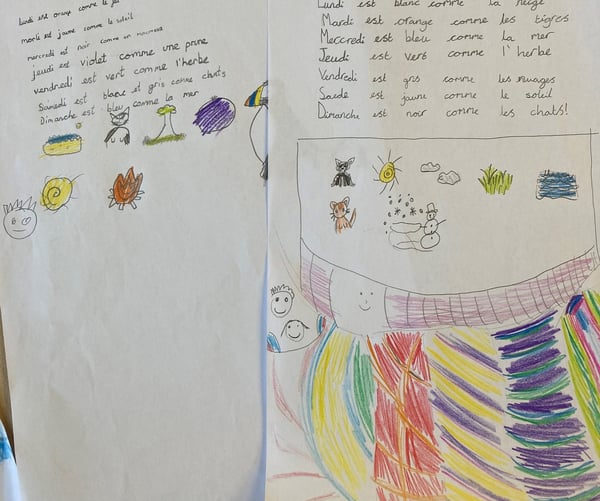Recycling and integrating previously learnt language
Using Talk for Writing methodology to recycle previously learnt language and integrate it into a new, creative context.
I had some Talk for Writing training recently, and it set me thinking about how I could go about planning a learning sequence for Year 4 which would retrieve previously taught language (viz. days of the week and colours, which pupils had learnt in Year 3) and integrate this language into a new context.
If you are not familiar with the Talk for Writing approach, please read the next paragraph- if you are then feel free to skip ahead!
There are three stages in Talk for Writing- imitate, innovate and invent. The imitation stage involves learning a story by heart, using mimes and a 'story map'- basically a set of symbols that promote recall of the text. The innovation stage is where learners change certain details of the text, e.g. setting, characters. etc. and then retell the story. The invent stage is where learners have the freedom to move away from the text but keep within the same genre. As an MFL teacher I was immediately struck by how similar this is to presenting a model text on a topic and then adapting it by changing certain key items of vocabulary.
I created a poem combining days of the week and colours, following the pattern 'Lundi est bleu comme la mer'. We practised some of the key sounds so that children were secure with the phonics, and then learnt the poem with actions and images as per the Talk for Writing methodology. We then entered the innovate stage, in which I asked the children to change the colours and the final noun. This generated discussion about gender and articles, so was useful in reinforcing children's grammatical development. The most able were able to use dictionaries independently to change the final nouns, and SEN learners received scaffolding in the form of a word bank and 1:1 support with dictionary usage.
Here is the presentation I used and also the worksheet. Please see below for some of the finished poems. The children really enjoyed this activity, and it proved effective in consolidating previously learnt vocabulary and integrating it into a new, creative context,






